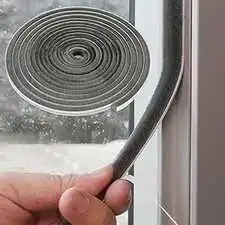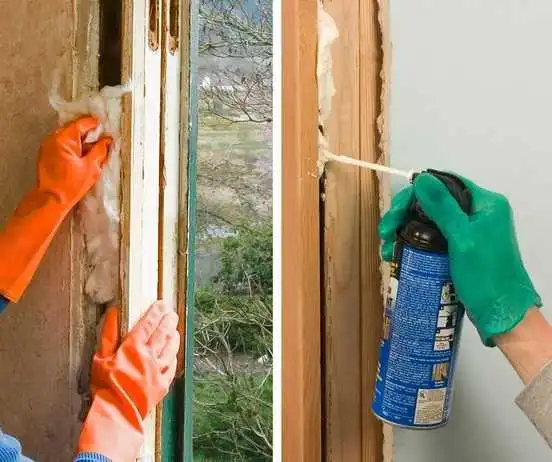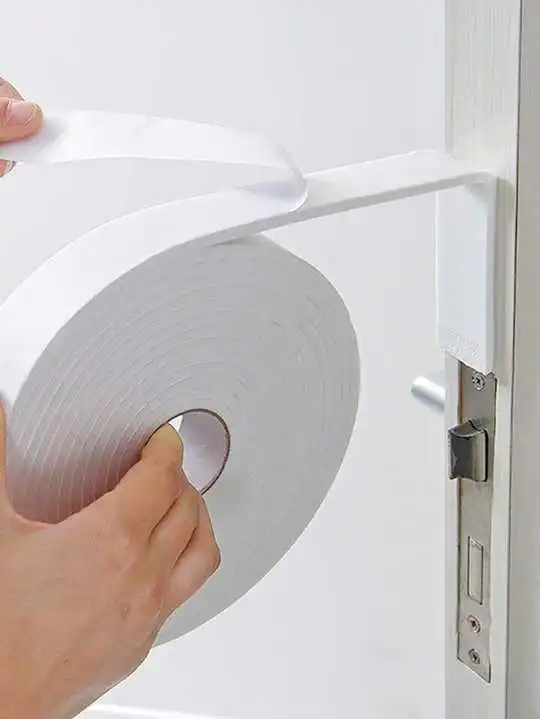In the quest for a more energy-efficient and comfortable home, we often consider projects such as new windows or insulation. However, one of the most effective and affordable solutions is commonly overlooked: weatherstripping. This simple material is the first line of defense against air leaks, playing a vital role in keeping your home warm during winter and cool in the summer.
This article explains what weatherstripping is, why it’s important for your energy bills, and how you can easily install it yourself to save money and improve your home’s comfort.
What is Weatherstripping and Why Does it Matter?
Weatherstripping is a material used to seal the gaps around doors and windows. It comes in various forms, from rubber and foam to vinyl and metal, and its primary role is to create a tight seal that prevents air from infiltrating and escaping your home.
Think of your home as a pressurized box. When the air inside is warmer or cooler than the air outside, it naturally tries to find equilibrium. Without proper seals, this process occurs through tiny cracks and gaps, resulting in air leaks and significant energy loss. According to the U.S. Department of Energy, these air leaks can account for 5% to 30% of a home’s heating and cooling costs.

Air Leak Detection Points
Before you can fix the problem, you need to find it. Here are the most common places to check for air leaks in your home:
- Doors: Look for gaps around the edges and at the bottom of the door. You should not be able to see daylight around a closed door.
- Windows: Inspect the perimeter of the window sash and frame for any cracks or spaces.
- Mail Slots and Pet Doors: These can be significant sources of air leaks if not properly sealed.
- Chimneys: The chimney damper should form a tight seal when the fireplace isn’t in use. If it’s not, the damper may be old, warped, or damaged and likely needs to be repaired or replaced.
Choosing the Right Type of Weatherstripping
The best type of weatherstripping depends on the location and the size of the gap that needs to be sealed. Here are the most common types:
- Foam or Self-Adhesive Tape: This is the easiest to install and is ideal for sealing small, irregular gaps around window sashes or door frames. It’s a quick and affordable fix.
- V-Strip (Tension Seal): Made of metal or plastic, this strip fits into the grooves of a window or door casing. The “V” shape creates a strong seal as the door or window closes, making it very durable.
- Door Sweeps: These are installed on the bottom of a door to seal the gap between the door and the threshold. They come in various materials, including vinyl, foam, and bristles.
- Tubular Gasketing: This hollow, flexible material is screwed or stapled into a door casing. When the door closes, it compresses the tube to create a tight, airtight seal.

A Simple DIY Guide to Installing Weatherstripping
Installing weatherstripping is a straightforward project that anyone can do.
- Clean the Surface: Before you begin, thoroughly clean the area where you’ll be applying the weatherstripping. Dirt and grime will prevent it from sticking properly.
- Measure and Cut: Measure the length of the area you need to seal. Cut the weatherstripping to the correct size using scissors or a utility knife.
- Peel and Stick: For self-adhesive tape, simply peel off the backing and press the strip firmly into place. For other types, you may need to use screws or staples.
- Test the Seal: Close the door or window to ensure the new weatherstripping creates a tight seal. Make any adjustments as needed.

Benefits of weatherstripping
Beyond the significant reduction in your energy bills, weatherstripping offers several other benefits:
- Pest Control: It seals small gaps that pests such as insects and rodents pass through.
- Reduced Noise: A tighter seal can also help block out noise from outside, creating a quieter indoor environment.
Conclusion
Weatherstripping is a small investment that delivers a huge return. By taking a few minutes to seal the leaks around your doors and windows, you significantly improve your home’s energy efficiency.





